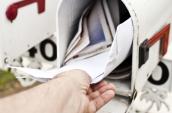Snap a photo of a sunset with your iPhone and you can upload it to Twitter with a few clicks. But your smartphone might be transmitting more than a pretty photograph. It could be collecting and storing data about your real-time location – and then broadcasting that information when you upload photos onto the Internet.
What is Geotagging?
Geotagging refers to the practice of adding location information – like GPS coordinates – to different types of media, such as photos. The location information is embedded in a way that may not be visible to the naked eye. There are several ways to make geotags visible, including browser plug-ins and software programs that can reveal the location information embedded in photos, videos and other types of media.
In Cybercasing the Joint: On the Privacy Implications of Geotagging, two researchers from the University of California Berkeley investigated how different websites incorporate geotagged media. By examining photos and videos on Flickr, Craigslist and Youtube, they found 1.3% to 4.3% of uploaded media included embedded location data. Not surprisingly, they found geotagged photos and videos were most often captured through high-end cameras and smartphones (rather than basic cell phones).
Mobile technology is rapidly evolving. While currently only a small percentage of the population owns smartphones, we can expect this to increase dramatically in the coming years. But the rise of smartphones shouldn’t mean the death of location privacy.
Who Might Be Interested in Location Data?
Location data can be some of your most sensitive information – and there may be uses for it that are not yet apparent. Your real-time location may indicate your home and work addresses, your commuting patterns, what religious institution you visit, how often you go to a doctor, political rallies you attend or whether you are seeking the advice of a lawyer.
Websites such as pleaserobme.com drive home the fact that location data can be used to commit crimes in the real world. This site aggregated real-time status updates on Twitter to showcase how broadcasting your real-time location might leave your home vulnerable to burglary while you were away.
While analysts have long speculated that real-time location can be used by burglars or stalkers when perpetrating crimes, little research has been done on whether geotags specifically are being used in this way.
How geotags will be used for advertising also remains to be seen, but it’s clear that marketers are increasingly interested in culling location data of consumers. For example, advertisements on mobile phones can be customized based on your location. While this technology is relatively new, companies like Navteq are already implementing it. In one case study, McDonald’s Finland used the Navteq service to send a special offer to the mobile devices of consumers in close proximity to a McDonald’s location. The head of marketing for McDonald’s Finland, stated that: “Targeting consumers when they are near our locations and then navigating them right into our stores is powerful marketing for McDonald’s.”
While McDonald’s may find a marketing advantage in location-based advertisements, it raises concerns about consumer privacy. Did all of the people receiving these special offers expect their location data to be used in this way? Did they even realize their location data was being collected by their mobile phones and shared for marketing purposes?
In fact, consumers have reason for concern. Your mobile device could well be compiling a dossier of data about where you are and where you’ve been – data that later could be used against you in a court of law. Today, law enforcement officers even take courses in “iPhone Forensics” -- how to tap into the rich evidence available on the average iPhone. For an in-depth discussion of locational privacy, read the ACLU of Northern California's Location-Based Services: Time for a Privacy Check-in
Privacy and the Technology of Geotagging
Location data that is willingly shared by a user has numerous troublesome privacy implications, but geotagging brings additional concerns. Unlike many other forms of location data sharing, geotagging is often not visible to the naked eye – meaning a user might need additional software to reveal what data is being shared. Since many devices, including Apple’s popular iPhone, come with the geotagging automatically enabled, it’s likely that many of the people uploading geotagged data to the Internet don’t realize they are sharing their location data.
This information may be stored in the mobile device itself and in the network it connects to. For the privacy-concerned consumer, even deleting previously stored location data may not help. “Deleted” data may still be stored on a mobile phone, a third party platform or in the archives of a social network. This data may exist indefinitely, with the consumer unable to access it or have it erased.
Keeping sensitive location data private can be tricky. Here are a few tips to try:
- Visit http://icanstalku.com/ – a website designed to raise awareness about the dangers of geotagging. This site provides step-by-step instructions for disabling location tagging on several popular phones, including the iPhone.
- If you are using a social network, look into the privacy settings. Consider turning off location sharing and/or choosing a private account. (Note that Facebook removes geotags from uploaded photos.)
- Take particular care if you are uploading photos to a website where strangers will see them -- such as Craigslist or Ebay.
- Consider installing a plug-in on your browser to reveal location data – such as Exif Viewer for Firefox or Opanda IExif for Internet Explorer, so you can see geotagged data for yourself.
By taking the time to learn about geotagging, you can ensure the next photo you upload won’t be secretly sharing your location with the World Wide Web.


